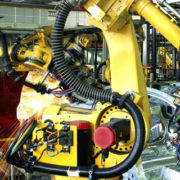Watershed Thinking in our Industry – New Tooling is Only Marginal Improvement
I had some most interesting customer feedback, as it is a watershed in what is going on in our industry – huge productivity gains will come from efficiency on the shop floor production processes, not just the machines themselves.
About 15 months ago, my partner and I presented to the corporate management team of an international machine tool manufacturing vendor – we had the ears of the top execs. Moreover we had the connection with shop floor engineers in specific plants that wanted to install our OEE Productivity Monitoring systems – they needed our system. Well nothing happened, and it dragged on – you know the story.
Yesterday I got a call from the main engineer (we had met at IMTS – 2008) the project was on!
He described the political layout, champions, etc., and mentioned the people we met 15 months ago, and pointed out that their corporate boss (CEO / VP MFG) was driving this project. Yes, this is excellent sales work, sowing the seeds, planning, capital budgets, etc.
But most importantly, the engineer shared with me that over the last few years they have invested in the latest and greatest equipment, fastest this machine and that, better tooling, all kinds of things. They had noticed that their productivity improvement from new equipment usage was initially in the 20% range and has steadily dropped down to the 2% range. That means the marginal gain of using the latest and best equipment was really minimal. So the question then was why – what was happening in their process that meant they could not get a high return on their new equipment. Was it machine utilization, equipment, was it their processes? Where could they spend their financial capital to get a maximum return?
They have come to realize now that their huge productivity gain would come from efficiency on the shop floor.
But first, they needed to measure what was going on – and this is where Memex comes in, as this is what we do, automatically at the machine. This to me is huge – we understand it by being in the industry, and it is like the forest and trees syndrome, but to hear a customer quantify it with real return numbers was music to our ears.
I also believe the economic cycle is at work here, 2011 is the year manufacturers are spending, and it has taken until now to open up those projects. I can tell you we are gearing up engineering in a big way – for all the right reasons.
We expect manufacturers to be more efficient, we are seeing it with our customers daily in real-time!


